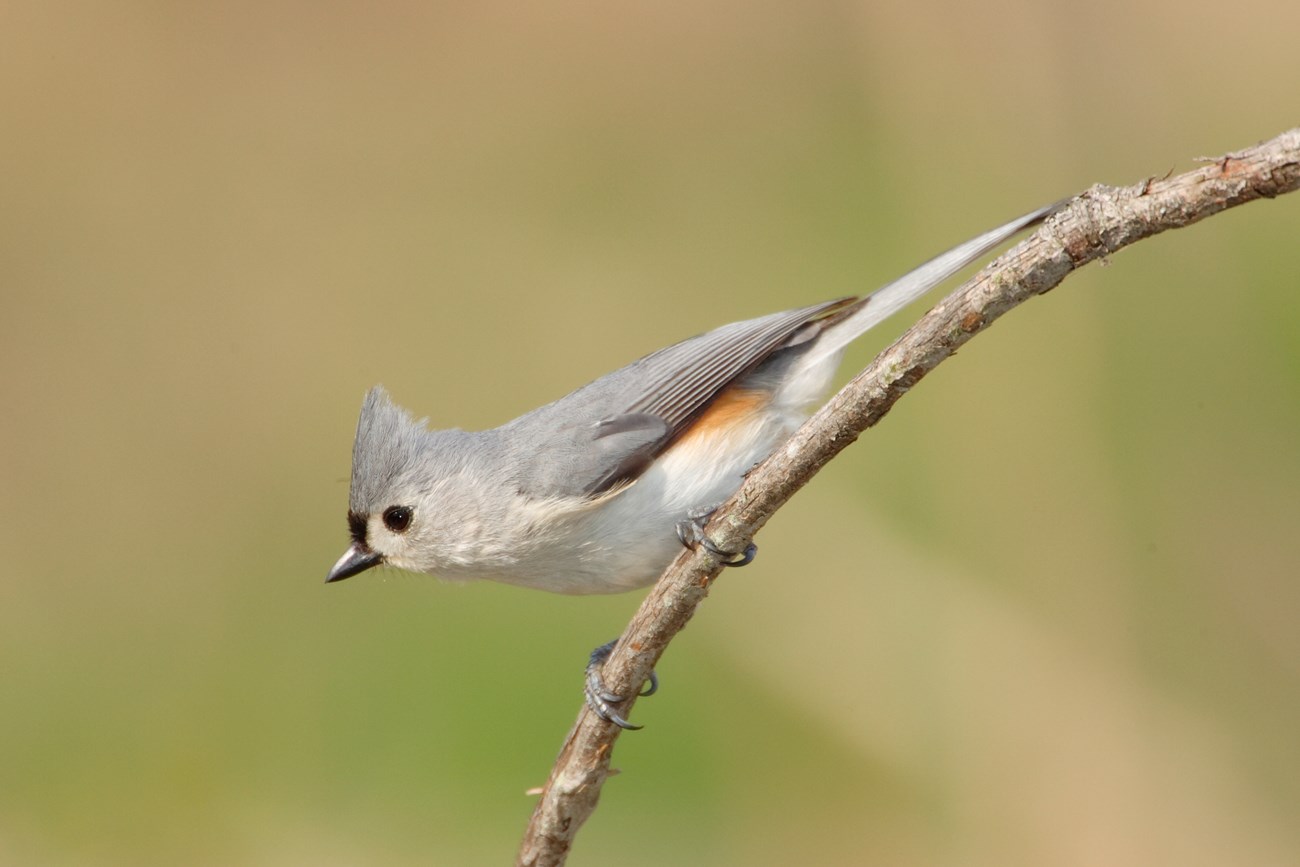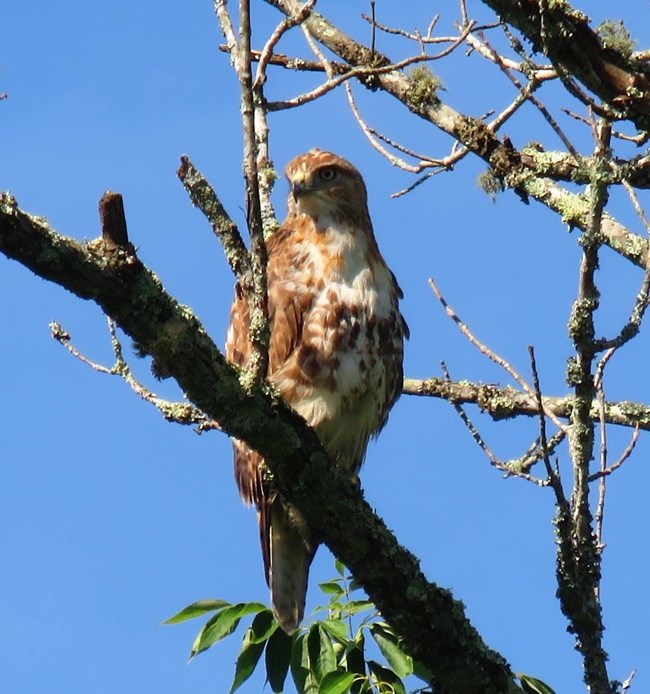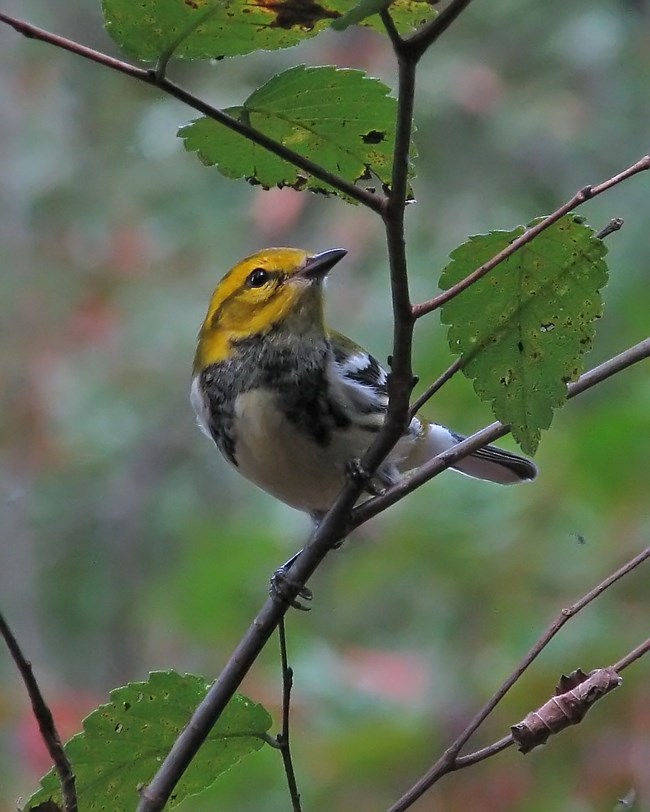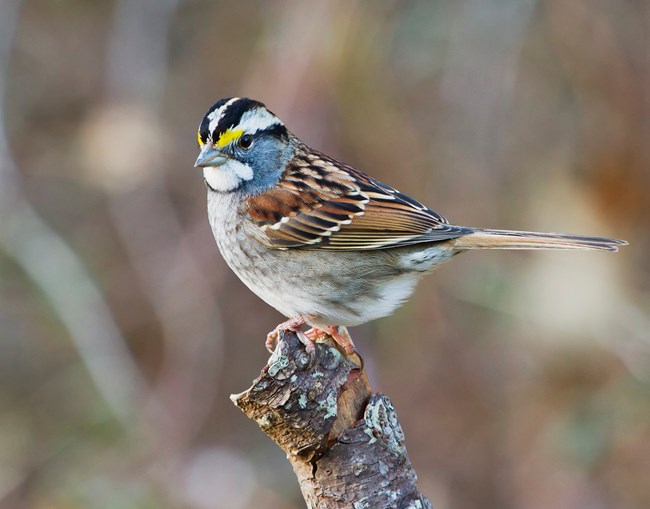
NPS Photo/ CUVA/ © Jim Schmidt Mammoth Cave National Park is much more than just the sum of its caves! A nearly 53,000-acre park and portion of an International Biosphere Reserve, Mammoth Cave has some of the largest tracts of undeveloped forest remaining in south-central Kentucky. The park is home to a vast array of summer songbirds and other avian species. More than 170 species have been reported, but the variety you see will depend upon both the habitat type and the season in which you are visiting. 
NPS Photo/ Paula Cormany Year RoundOften, the most familiar birds are the species residing here more or less year-round. Some American Robins, for instance, may fly south for warmer weather, leaving their summer territories, but other robins will move in from colder regions to replace them. Wild turkeys can also be commonly spotted stalking the open woodlands and forest edges twelve months a year. American crows, blue jays, and northern cardinals – are denizens of our woods and fields throughout the year. The same goes for tufted titmice, Carolina chickadees, Carolina wrens, American goldfinches, and most of our woodpeckers, each in their own respective habitats. 
NPS Photo/ ROCR/ © Vicki DeLoach Late Spring and SummerLate spring and summer are a time for songbirds! A huge assortment of insect-eaters such as New World warblers, vireos, and flycatchers will be readily heard (if not seen) as they relocate to the Northern Hemisphere from the tropics to take advantage of the bountiful supply of prey and nesting sites to raise a new generation of young. FallCome fall, more than the foliage will be turning, as many of the park bird species “bulk up” in preparation for their return flights via the great Mississippi Flyway en route to their respective wintering grounds. This migration means autumn is good time to see a larger numbers than usual of some birds. Occasionally the less common northern ‘cousins’ of our local birds, such as black-throated green warblers, American redstarts, and rose-breasted grosbeaks, may be spotted passing through on their travels to warmer climates. 
NPS Photo/ SHEN Late Fall and WinterLate fall and winter bring their own unique assembles of avian life: red-breasted nuthatches, typically a resident of northern climates, move into the treetops alongside a more common local cousin, the larger white-breasted nuthatch. White-throated and song sparrows suddenly increase in abundance; and it is a sure sign of winter when the dark-eyed junco, another sparrow of the northern forests, settles in. The yellow-rumped warbler is also accustomed to our Kentucky winters, with a specialized digestive system allowing it to survive on berries until the insects awaken in the spring. EXPLORE A PHOTOGRAPHIC GUIDE OFMammoth Cave Area Birds |
Last updated: November 9, 2021
